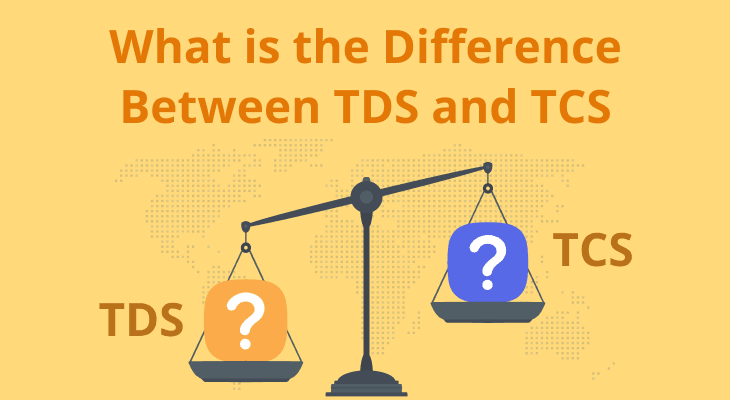
What is a Tax-Saving Fixed Deposit? Everything You Need to Know for Section 80C Deductions
When it comes to saving taxes, many individuals look for investment options that not only help grow their money but also provide tax benefits under Section 80C of the Income Tax Act. A tax-saving fixed deposit (FD) is one of the most popular instruments for this purpose. It allows you to secure your money for a fixed tenure while claiming a deduction on your taxable income. Unlike other volatile investments, a tax-saving FD provides guaranteed returns, making it a safe bet for risk-averse investors. In this blog, we will explore everything you need to know about tax-saving FDs, from how they work to their benefits and limitations.
Tax-Saving Fixed Deposit: Meaning and Definition
A tax-saving fixed deposit is a specific type of fixed deposit that allows you to claim tax deductions under Section 80C of the Income Tax Act. It is a financial instrument offered by banks and other non-banking financial institutions (NBFCs) where you invest a one-time amount for a fixed tenure, typically ranging from 5 to 10 years, and receive interest at a predetermined rate.
The primary benefit of this FD is its eligibility for a tax deduction of up to ₹1.5 lakh per annum. The interest earned on this FD is taxable, but the initial investment is deductible from your total taxable income. This makes it an attractive option for individuals looking to reduce their tax liabilities while earning guaranteed returns.
How Does a Fixed Deposit Work?
A fixed deposit is a straightforward financial instrument that works on the principle of locking your money with a bank or a financial institution for a fixed period in exchange for guaranteed returns. When you invest in a regular FD, you can choose the tenure (typically from 7 days to 10 years) and the interest rate is decided by the bank at the time of the investment. You will receive your interest either quarterly, annually, or at maturity.
For a tax-saving FD, however, there are a few specific conditions:
The minimum tenure is 5 years.
It comes with a lock-in period of 5 years, which means you cannot prematurely withdraw the funds during this time.
The deposit amount is eligible for deduction under Section 80C, subject to a maximum limit of ₹1.5 lakh in a financial year.
It’s important to note that the interest earned on a tax-saving FD is taxable, though it is credited to your account either quarterly or annually, and you will be required to pay tax on it according to your applicable income tax slab.
Key Features of a Tax-Saving Fixed Deposit
Tax-saving fixed deposits come with certain features that make them unique compared to regular fixed deposits. Here are the key features to understand:
Tax Deduction under Section 80C: You can claim a tax deduction of up to ₹1.5 lakh per year, which lowers your overall taxable income.
Fixed Tenure: The lock-in period for tax-saving FDs is 5 years. During this time, you cannot withdraw your investment.
Fixed Interest Rate: The interest rate is predetermined at the time of investment and does not fluctuate over the tenure. This guarantees stable returns throughout the investment period.
Interest Taxable: While the principal investment is deductible under Section 80C, the interest earned on the FD is taxable. It is added to your total income and taxed as per your tax slab.
Safe Investment: Tax-saving FDs are offered by banks and financial institutions that are regulated by the Reserve Bank of India (RBI), making them a safe and secure investment option.
Low Risk Involved: Unlike stocks or mutual funds, tax-saving FDs do not carry market risk, making them a popular choice among conservative investors. They do, however, carry the risk of the bank or issuing organization defaulting on the payment when it is due.
Benefits of Tax-Saving Fixed Deposits Vs. Other Investments Under Section 80C
When considering tax-saving options under Section 80C, there are several alternatives such as Public Provident Fund (PPF), National Savings Certificates (NSC), or Employee Provident Fund (EPF). However, tax-saving FDs come with unique advantages:
Guaranteed Returns: Unlike PPF or mutual funds, the returns from a tax-saving FD are fixed and guaranteed, providing stability and predictability to your investment.
Shorter Lock-In Period: The 5-year lock-in period for a tax-saving FD is relatively shorter compared to PPF, which has a 15-year lock-in period. This makes FDs more flexible for investors looking for shorter-term commitments.
Liquidity: While tax-saving FDs cannot be prematurely withdrawn, the interest is credited regularly, and you can also opt for monthly or quarterly payouts. This can provide some liquidity during the lock-in period.
No Market Risk: As mentioned earlier, tax-saving FDs are not exposed to market risks, unlike ELSS (Equity Linked Savings Scheme) or other market-linked instruments. This makes them an ideal option for conservative investors who prefer stability over potential high returns.
Easy to Understand: Tax-saving FDs are simple to understand and invest in. There are no complex calculations involved, unlike PPF or other long-term investment options. You can easily calculate your returns through a FD calculator as well.
Availability: Tax-saving FDs are offered by a wide range of banks, including private, public, and foreign banks, making them easily accessible.
Who Should Consider Investing in a Tax-Saving Fixed Deposit?
A tax-saving FD is suitable for a wide range of investors, especially those who are looking for stable returns with tax benefits. Here’s who might consider investing in one:
Conservative Investors: If you are someone who prefers low-risk, stable investments, a tax-saving FD would be ideal for you. It guarantees fixed returns with no market risk involved.
Individuals Seeking Tax Benefits: Tax-saving FDs are especially beneficial for people who want to reduce their taxable income by investing under Section 80C. If you are looking to maximize your tax savings, a tax-saving FD can help.
Short-Term Investors: Since the lock-in period is only 5 years, tax-saving FDs are suitable for those who prefer relatively shorter commitments compared to other Section 80C options like PPF, which have longer lock-in periods.
Low-Interest Rate Environment: If you are concerned about inflation eating into your returns and are seeking a safer option to earn a fixed return, tax-saving FDs might be a good choice, particularly when interest rates are low.
People with Stable Income: Tax-saving FDs suit people who have a stable source of income and can afford to park their money for 5 years without worrying about liquidity.
Conclusion
A tax-saving fixed deposit (FD) is a reliable, safe, and straightforward investment option for those looking to save taxes while securing guaranteed returns. It offers a tax deduction under Section 80C of the Income Tax Act, making it an attractive choice for individuals looking to reduce their taxable income. While the returns may not be as high as those from market-linked investments, the safety, simplicity, and tax benefits make it a preferred option for conservative investors and tax-savers alike. By understanding how tax-saving FDs work and their key features, you can make an informed decision about whether this investment is suitable for your financial goals.
FAQ
What is a tax-saving fixed deposit?
A tax-saving fixed deposit is a type of investment instrument in which you save taxes under Section 80C of the Income Tax Act. It has a lock-in period of 5 years and offers guaranteed returns at a fixed interest rate.
How much tax can I save with a tax-saving FD?
You can claim a tax deduction of up to ₹1.5 lakh per financial year by investing in a tax-saving FD, which reduces your taxable income under Section 80C.
What is the lock-in period for a tax-saving FD?
Tax-saving fixed deposits come with a mandatory lock-in period of 5 years. During this time, premature withdrawals or loans against the deposit are not allowed.
Do tax-saving FDs generate tax-free interest?
No, the interest that you earn on a tax-saving FD is taxable in your hands. It is added to your total income and taxed as per your applicable income tax slab.
What is the minimum amount required to invest in a tax-saving FD?
The minimum deposit amount varies by bank but generally starts at ₹1,000. There is no upper limit for investment, although only up to ₹1.5 lakh is eligible for tax deductions under Section 80C.
Can senior citizens invest in tax-saving FDs?
Yes, senior citizens can invest in tax-saving FDs. They may also benefit from higher interest rates, which many banks offer exclusively for senior citizens.
Are tax-saving FDs better than PPF or ELSS for tax saving?
Tax-saving FDs provide guaranteed returns, and a shorter lock-in period compared to PPF. However, ELSS funds have the potential for higher returns but come with market risks. Your choice should depend on your financial goals and risk appetite.
Can I open a joint account for a tax-saving FD?
Yes, you can open a joint account for a tax-saving FD. However, the tax deduction benefit under Section 80C is available only to the first account holder.
How can I invest in a tax-saving fixed deposit?
You can invest in a tax-saving FD by visiting your bank’s branch or through online banking platforms. Simply choose the tax-saving FD option and deposit the amount.
Are tax-saving FDs safe investments?
Yes, tax-saving FDs are considered safe investments as they are regulated by the Reserve Bank of India (RBI). They offer guaranteed returns and are suitable for risk-averse investors.


